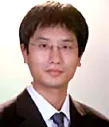Editorial:Recent advances in mechanics of unconventional electronics
2016-12-09jizhouSong
Editorial:Recent advances in mechanics of unconventional electronics
Conventional electronics is planar,hard,and rigid due to the intrinsic brittle nature of inorganic semiconductor materials(e.g., silicon and gallium arsenide).The modern electronic technology has typically been concerned with large or small but durable and long-lasting electronics.Recently developed materials and mechanics concepts yield unconventional electronics with unique characteristics(e.g.,deformable,degradable,etc.).The advent of unconventional electronics has changed the way that people think about the possibilities in the area of electronics.
Two typical classes of unconventional electronics have attracted much attention in the last decade.One is stretchable electronics based on silicon technology,which offers the performance of conventional wafer-based devices but with the ability to bend, fold,twist,stretch,andwrapcomplexandcurvilinearsurfaces.Due to these unique properties,stretchable electronics have enabled many novel and exciting applications such as stretchable complementary metal oxide silicon(CMOS)circuits,electronic eye cameras,epidermal electronics,stretchable inorganic light-emitting diodes,mechanical energy harvester,and multifunctional balloon catheters.These stretchable electronics usually have diverse architecture made of hard thin film and soft substrate that span more than 5 orders of magnitude in elastic modulus,which is different from that of conventional electronics.This difference has brought a lot of opportunities to mechanics communities and has pushedtheadvancementofmechanicsinmanyareassuchasbucklingmechanics,adhesionmechanics,andmechanicsofsoftmatter. In return,mechanics provided system design guidelines to avoid time-consuming and expensive trial and error methods.
The other class of unconventional electronics is transient electronics,which is an emerging technology that can physically disappear in water or biofluids within a programmed period time. This unique ability opens up a wide range of applications from bio-degradable electronics to diagnostic/therapeutic implants. One can use transient electronics as a temporary implant when needed and allow it to safely dissolve on its own but rather than remove it through surgery when not needed.Millions of patients,especially those who relies on biomedical implants (e.g.,pacemakers),will benefit from this innovative electronic technology.Transient electronics has been demonstrated with hydrolysable thin inorganic components such as silicon nanomembranes,various metals(e.g.,Mg,Mo,etc.)electrodes,and dielectrics(e.g.,MgO,SiO2,etc.).The most crucial aspect of transient electronics is their ability to disintegrate in a practical and controlled manner.Mechanics models have been developed to study the dissolution of various functional materials as well as the devices constructed from these functional materials.
Mechanics will help to develop robust methods for the development of the above two mentioned unconventional electronics by identifying the underlying physics and establishing design guidelines and optimal strategies for experiments/fabrication.In this special issue consisting of three review papers and two letters,readers can find various aspects on the mechanics of stretchable and transient electronics.The three review articles focus on the overview on the recent advances in mechanics of unconventional electronics including mechanics of bioinspired imaging systems(i.e.,tunable hemispherical eyeball camera and artificial compoundeyecamera),thermalanalysisofstretchableelectronics and mechanics of transient electronics,while the two letters focus on mechanics of two specific unconventional system with one on the balloon catheter,which is a widely-used surgical tool for minimallyinvasiveprocedure,andtheotheronthebucklingmechanics of stretchable design for bio-integrated devices.
We wish to take this opportunity to thank all the authors for their contributions and supports to this special issue.Hopefully, both expert readers and readers with different background appreciate the progresses and variety of mechanics models related to unconventional electronics.

Jizhou Song is a Professor in the Department of Engineering Mechanics at Zhejiang University.He obtained his Ph.D.degree from University of Illinois at Urbana-Champaignin2007.HeworkedasanAssistantProfessorat University of Miami before joining Zhejiang University in 2013.His research interests include mechanics of stretchable electronics,thermomechanical behavior of materials and thermal management.His recent awards include the Ralph E.Powe Junior Faculty Enhancement Award from Oak Ridge Associated Universities in 2010 and the Outstanding Young Researcher award from Qiu Shi Science and Technologies Foundation in 2014.
Jizhou Song Department of Engineering Mechanics, Soft Matter Research Center, Key Laboratory of Soft Machines and Smart Devices of Zhejiang Province, Zhejiang University,Hangzhou 310027,China
http://dx.doi.org/10.1016/j.taml.2016.02.001 2095-0349/
©2016 Published by Elsevier Ltd on behalf of The Chinese Society of Theoretical and Applied Mechanics.This is an open access article under the CC BY-NC-ND license(http://creativecommons.org/licenses/by-nc-nd/4.0/).
杂志排行
Theoretical & Applied Mechanics Letters的其它文章
- The finite deformation of the balloon catheter
- Adhesion-governed buckling of thin-film electronics on soft tissues
- Mechanics of bioinspired imaging systems
- Recent development of transient electronics
- Recent advances on thermal analysis of stretchable electronics
- Acoustomechanics of semicrystalline polymers
